- Learning time
- 30 minutes
- First play time
- 100 minutes
Whistle Stop
Designed by: Scott Caputo
In Whistle Stop each player is a railroad baron running their own company, building their tracks across the USA from east to west. The goal is to be the most successful – but there are a number of different ways to achieve success!
The board is actually a frame, within which you will add hexagonal tiles as you expand your railroads, which show the railroad tracks. Some are added before the game begins: the east coast column, the west-coast column, and a central column with some rewarding hexes within it. Players each have their own hand of hexes, and begin with their trains on the eastern side of the board and one whistle in their possession.
Each turn players collect coal from supply and take up to four actions using coal or whistles (or both) to move their trains along the track. If they move their train along a track off the existing map, then they add a hex from their hand to extend it, meaning as the game progresses the board slowly fills up. Coal can take you one space only – and never east! – whereas the whistles can take you up to two spaces in any direction. Wherever your train stops at a minor stop, you pick up the goods shown there (one of several coloured cubes). When your train stops at a major stop (the black special tiles) you can use that stop to improve your position in the game (picking up coal, whistles, or gold for points) or, if the major stop is a city, you must pay the goods that city wants in order to collect the points, and a share in the railroad company shown on the city tile ( – if you stop at a city without the goods, it costs you points instead). The most rewarding cities, though, are nestled along the west coast, and delivering here not only gets you big points, but also a reward of goods/coal/whistles/gold.
Finally each game will have available upgrades for your company, which can be bought using goods cubes in order to give powerful in-game advantages, such as scoring points for each share you have, or swapping out a useless share for a more alluring one. The game continues for a set number of rounds, or until any one player gets all their trains to the west coast. Players add on points at the end for goods/coal/whistles/gold, plus a whopping fifteen points for each railroad company they have the most shares in! Any special tiles in your hand cost you a ten-point deduction.
Joe says
There's been a recent trend for games that take the themes and mechanics of bigger games and cook them down into a quicker experience. Of these, Whistle Stop, with its nods to Age of Steam and Railways of the World manages to do this better than most, bringing a decent chewy game along with it for the ride. The multiple trains offer some good scope for messing with the other players whilst getting stuff done for yourself, and it all feels like a good balance of planning and chaos. On a side note, the player colours are distinctly Swizzels-like. Not sure if that's good or bad, but it did make me want to eat the score markers . . .
The guru's verdict
-
Take That!
Take That!
There is a little Take That in the game. Players can nip ahead of each other to grab goods from the minor stops (only one train can stop there at a time) and place hexes to send each other's trains off on trips they may not have intended to take. It's also possible to buy (it feels more like stealing!) upgrades from each other - paying the upgrade cost to the bank, and one goods cube to the 'seller'.
-
Fidget Factor!
Fidget Factor!
Moderate - there can be lulls, but how many and for how long really depends on who's playing. The fact the other players are adding tiles mean you don't truly know the lay of the land until your turn arrives, so there's sometimes a reactive feel where players pause to reconsider.
-
Brain Burn!
Brain Burn!
A first glance at the game and it might look chaotic, but it's lighter than it looks. However there is some brain-burning here in the multitude of options - not only the various routes your trains might take, but how those can combine together to score you the most points.
-
Again Again!
Again Again!
There's quite a bit of variety here - not only in the set-up and how the game 'builds itself' with the tiles coming out randomly in each game, but also the upgrades, which can be pivotal.

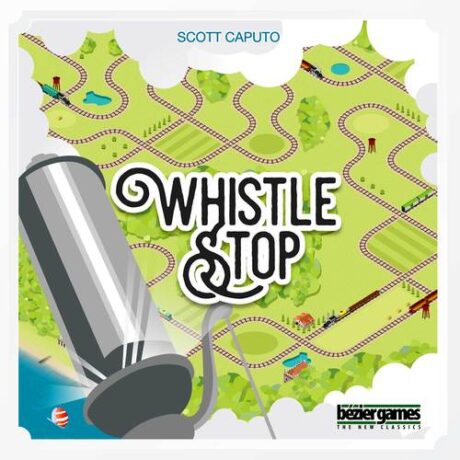
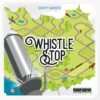
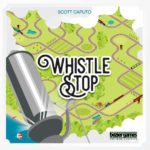
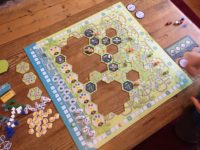


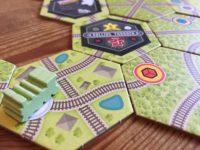



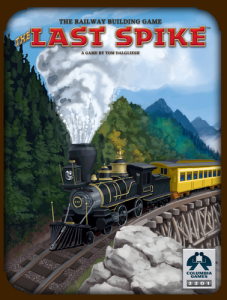
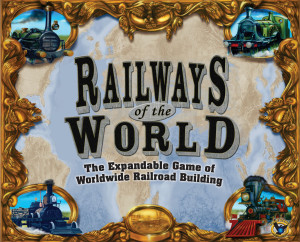
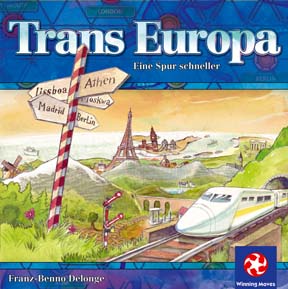
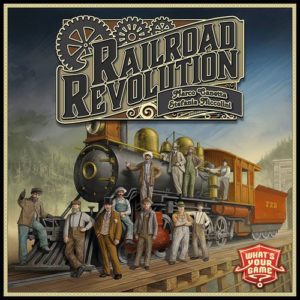

Sam says
While it doesn't convince as realistic retelling of the great railroad revolution - the tracks are more like a jumbled mass of spaghetti spilled from the mind of a deranged engineer with no sense of direction - the joy of Whistle Stop is in the slightly madcap aspect of it, as you eagerly look to pull off a great combo where trains A and B pick up what you need and train C - somehow - delivers it. You can race for the west ignoring shares, or pootle along delivering goods, or go for a tactical, reactive game. You can ignore upgrades entirely or build a strategy around them - there is a lot to explore here and I feel it's a rather wonderful game. The only downside here is the pastel colours can make it hard to navigate for colour-blind gamers.